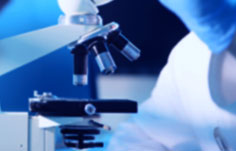New York's superconductivity industry highlights technology and economic benefits to the state at third technology summit
- New York's Third Superconductor Technology Summit is underwritten by the New York Energy Research and Development Authority
- Expert panels discuss benefits of applications in power and energy, electronics and computers, medicine, science and research
- Community and academic leaders provide insight into building the state's superconductor industry
- Industry gathering provides access to New York's leading technologists, academic and business leaders
June 3, 2013 - Albany, NY - Business and education leaders, prominent scientists, engineers and government officials gathered on May 7 in the hub of New York's Tech Valley region at the College of Nanoscale Science and Engineering (CNSE) in Albany for the Third New York State Superconductor Technology Summit. CNSE hosted this year's summit, underwritten by the New York State Energy Research and Development Authority (NYSERDA) and organized and co-sponsored by MTECH Laboratories, together with GE Global Research, Hypres, Inc., Philips Healthcare, and SuperPower Inc.
Summit organizers highlighted that the highly successful MRI business of both GE and Philips, based on superconducting magnets, is already providing significant contribution to New York's economy, and that newer applications of superconductivity, such as those focused on improving our electricity grid that are even now beginning to positively impact our economy, are expected to generate thousands of new jobs in the state as the technology becomes broadly adopted over the next several years.
Francis J. Murray Jr., President and CEO, NYSERDA, said in his keynote remarks, "As we continue to improve the state's power transmission system, superconductor technology presents innovative and exciting opportunities to provide the power needed to make the grid smarter, more resilient and more flexible to meet growing energy demands. The conference demonstrated once again what the Governor has repeatedly emphasized, namely the critical importance of partnerships among government, academia and business in promoting investment in new technology. Innovation is essential for economic growth. NYSERDA is proud of our tradition of partnership with companies here in New York that are working on groundbreaking research and applications for superconductivity."
Mr. Murray also pointed out the leading role of New York in the demonstration of high temperature superconducting cables, with three of the world's leading programs located in the state: the Albany HTS Cable Project managed by SuperPower in which the world's first superconducting cable to be installed in a live grid was demonstrated in the National Grid system between 2006 and 2009; the Long Island Power Authority (LIPA) cable that is currently under construction; and the Project Hydra Cable that is about to be installed on the Consolidated Edison grid in New York City. Each of these world-class projects has been supported by NYSERDA in an effort to demonstrate the energy efficiency benefits of superconducting cables.
Dr. Michael J. Hennessy, President and Co-Founder of MTECH Laboratories of Ballston Spa, NY summarized a recurring theme of the day when he commented that "it is through partnering with each other, with government, with academia that we will be able to build this industry to its full potential. New York State is home to the full range of businesses that support superconductivity applications, from the superconducting wire supplier, SuperPower, to the device and system developers such as GE and Philips, to the refrigeration providers such as CryoMech and Q-Drive, and the schools and STEM programs, including Tech Valley High School, SCCC, CNSE, Union College and Union Graduate College, that inspire, train and develop our workforce. This is a force that is second to none."
As in the previous two summits, this year's event consisted of a series of panel discussions with world-class speakers representing many of the leading organizations in New York State which are promoting the advancement of superconductivity. Panel topics included Energy and Power, Electronics and Computers, Medicine, Science and Research, and Building the Superconductivity Industry in New York State.
Dr. Mark Johnson, Program Director with the Advanced Research Projects Agency-Energy (ARPA-E) in Washington, DC joined the panel to highlight three development programs underway by New York organizations, including the development of a superconducting magnetic energy storage system (SMES) by SuperPower and Brookhaven National Laboratory, together with ABB Inc. and the University of Houston; and two programs to develop alternatives to the use of rare earth elements for wind turbine generators - one including SuperPower, the other by Brookhaven National Lab.
The second panel focused on superconductivity in Electronics and Computers, and was moderated by Dr. Britton Plourde, Associate Professor at Syracuse University, who commented that "Recent developments in quantum computing, or information processing, show a promising future for computer designs that have the potential to solve problems that are intractable on conventional computers."
Joining the panel was Dr. Jerry Chow, Research Staff Member, Experimental Quantum Computing, of IBM T.J. Watson Research Center who remarked that "although there are numerous candidate systems for realizing qubits for quantum computing, a superconducting Josephson-junction based system holds considerable promise for scalability. By leveraging existing fabrication and lithographic techniques, along with careful attention towards microwave engineering, it will be possible to build a system which tests the ideas of quantum error correction for scaling towards a fault-tolerant universal quantum computer."
Dr. Oleg Mukhanov, Senior Vice President and General Manager, Government Operations, of Hypres Inc. said, "Low power, high speed, lossless data transmission available with superconducting electronics can dramatically increase energy efficiency of high-end computer systems. This will significantly increase the energy-efficiency of data centers and enable new generations of supercomputers."
Medicine, Science and Research was the topic of the third panel discussion, moderated by Dr. Derk Reefman, Director R&D and Engineering at Philips Healthcare who noted that superconductor magnets for MRI are the standard bearer for today's commercial superconductor industry.
The panelists provided illustrations of how the technology is being utilized today to explore a much broader range of applications in healthcare and other research areas, from NMR (nuclear magnetic resonance) used as an analytical tool in drug development and genomics, to proton therapy, an advanced form of radiation therapy that uses high energy particles to deliver a precise, controlled dose of radiation for cancer treatment. These devices utilize high magnetic field superconducting coils for their increasingly powerful magnetic fields, resulting in sharper imaging and a broader range of use in scientific disciplines.
According to Dr. Ramesh Gupta, Leader, HTS Magnet R&D Program of Brookhaven National Laboratory, "New York State is in a unique position in the field of superconducting magnets with universities, a national laboratory and industry making significant contributions by working together. There are several noteworthy examples of basic research, applied research, technology development, technology transfer and technology utilization all going in the same state. The superconducting magnets for Relativistic Heavy Ion Collider (RHIC) were developed at BNL and then the technology was transferred to industry to be built in large numbers for two rings in a 3.8 km long tunnel.
Brookhaven is working with SuperPower in demonstrating record field HTS magnets that can be used for energy storage and NMR. We are now beginning to move from basic demonstration devices to real facilities where HTS magnets provide a unique solution that is not possible with conventional superconductors. This summit provided a unique opportunity to discuss how the research and technology base at a national laboratory can help industry to solve present and future technical challenges."
The final topic of the day focused on Building the Superconductivity Industry in New York through partnerships among industry, academia, government and the community. The panel, moderated by Jeff Lawrence, Vice President of the Center for Economic Growth (CEG), emphasized the importance of advancing new industries through workforce development and business support programs.
Trudy Lehner, Senior Director of Marketing and Government Affairs at SuperPower Inc. noted that "it has been collaborations such as SuperPower's with SCCC and Union College, that have brought about workforce development programs which feed into our businesses, and partnering with Tech Valley High School, Questar III other STEM programs that are building the pipeline of future workers."
Featured in this year's Summit was the premiere showing of a short video titled, "Superconductivity … from New York State to the World," prepared by MTECH Laboratories of Ballston Spa. The film provides a look at the beginnings of the work in this field from the 1960s at General Electric and other companies and covers the wide range of work underway today at companies, laboratories, colleges and universities around the state. The video can be viewed at http://youtu.be/uQRgAYzkU1s.
In all, about 130 attendees were present at the Third New York State Superconductor Technology Summit. Many of the participants took advantage of the opportunity to visit the research and manufacturing facilities at Philips Healthcare in Latham, GE Global Research in Niskayuna, SuperPower in Schenectady and CNSE in Albany on the afternoon of May 6 to get a closer look at the work underway by these global leaders in superconductivity technology.
The two previous Summits were held in 2010 at Westchester Community College in Valhalla and in 2011 at miSci, the museum of innovation and science (formerly the Schenectady Museum) in Schenectady.
To learn more about the New York State Superconductivity Summit please visit:http://www.mtechlabs.com/sc_summit/index.html. The Summit program, available on the website, contains more details about the day's events and participants.
Contact us
Traute F. Lehner
SuperPower Inc.
450 Duane Ave., Schenectady, NY 12304
Tel: (518) 346-1414 ext. 3070
E-mail: tlehner@superpower-inc.com








 Share
Share Tweet
Tweet Share
Share